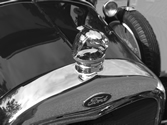| Welcome to Steve Plucker's |
| Home |
|
About
Steve .
|
|
|
|
Parts &
Articles .
on Originality . |
|
The 40 Horse
Block .
|
|
Bill of Sale .
|
|
Keys
& Codes .
|
|
Model A Frame .
|
|
Brake System .
|
|
Additional
Studies .
|
|
Sites of
Interest/ .
Acknowledgments . |
|
Home
|
|||||
|
|
|||||
| ..The 1928 Tudor Windlace - "Those Mysterious Holes" | |||||
 |
When Ford introduced the 1927 Model T Tudor Sedan, the Engineering Department decided to run the windlace, which attached to the Pillar (quarter door lock) Assembly, all the way down to inside the door cavity (this feature was not seen on any 1926 Tudor Sedans). | ||||
|
If you have any of these and would like to add the data to
this database, please contact me. Steve |
|||||
| Email Steve | |||||
| ..Available For Viewing - Those "Mysterious Holes" Study | ||
| "Those Mysterious Holes" Study | ||
|
Click
Here or the PDF ICON To View
PLEASE NOTE: This is 90kb file. If you do not have high speed internet, it may take you awhile to download |
||
| Those Mysterious Holes" Study - Epilogue | ||
|
Click Here or the PDF ICON To View
PLEASE NOTE: This is 85kb file. If you do not have high speed internet, it may take you awhile to download |
||
|
Want to see the Screw?
click here |
||
|
Want to see the
Windlace Screw Hole?
click here |
||
|
Want to see the
Windlace?
click here |
||
|
©2003-2013
Steve Plucker. All Rights Reserved.
Registered trademarks remain the property of their respective owners.
Information and materials contained herein remain the property of the author. Unauthorized reproduction is strictly prohibited. |
||||
|
Website design
and development by Gene Laks.
Send your
comments
|










